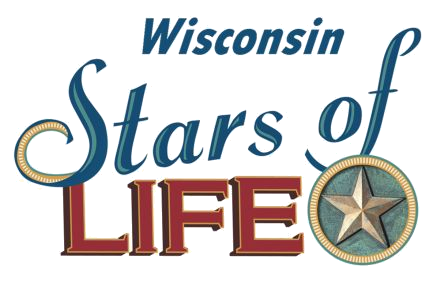The Professional Ambulance Association of Wisconsin is pleased to announce the 2015 group of Wisconsin Stars of Life honorees, individuals who represent the best-of-the best in our industry as nominated by their respective department or organization.
 Twenty-six honorees will be presented with awards and recognition at two events in Green Bay. The first is a welcome reception at Lambeau Field Atrium on September 23. The second is the dinner and awards program during the Paramedic Systems of Wisconsin Conference on September 24. Each nominee is also invited to the Wisconsin State Capitol this fall. One person from the group will advance to represent Wisconsin at the National Stars of Life ceremony in Washington, D.C. in April 2016.
Twenty-six honorees will be presented with awards and recognition at two events in Green Bay. The first is a welcome reception at Lambeau Field Atrium on September 23. The second is the dinner and awards program during the Paramedic Systems of Wisconsin Conference on September 24. Each nominee is also invited to the Wisconsin State Capitol this fall. One person from the group will advance to represent Wisconsin at the National Stars of Life ceremony in Washington, D.C. in April 2016.
2015 Wisconsin Stars of Life honorees include:
David Allen nominated by Amherst Fire District/Portage County EMS
Susan Armstrong-Schlegal nominated by Saukville Fire Department
Dr. Charles Cady nominated by the Professional Ambulance Association of Wisconsin
Tyler Christifulli nominated by Lifestar Emergency Medical Services
Julie Dehne nominated by Valders Ambulance
Dan Diestler nominated by County Rescue Services
Marlene Dirkes nominated by Gold Cross Ambulance / Mayo Clinic Medical Transport
Clayton Emons nominated by Gold Cross Ambulance Fox Valley
Deonne Eske nominated by Ashippun Fire Department
Kelsey Esser nominated by Tri-State Ambulance
Kevin King nominated by Shawano Ambulance Service
Matthew Koepp nominated by Baraboo District Ambulance
Thomas Konieczka nominated by Greenfield Fire Department
Larry Krueger nominated by the Town of Sheboygan First Responders.
Jon Masi nominated by Paratech Ambulance
Buck McAlpin nominated by the Professional Ambulance Association of Wisconsin
Beth Morando nominated by Ryan Brothers Ambulance
James Poltrock nominated by Kenosha Fire Department
David Robbins nominated by Ryan Brothers Ambulance
Nick Romenesko nominated by Gold Cross Ambulance Fox Valley
Amy Smith nominated by Tri-State Ambulance
Dr. Steven Stroman nominated by De Pere Fire Rescue
Rebecca Versey nominated by Orange Cross Ambulance
Christoph Walters nominated by Paratech Ambulance
Amy Zehr nominated by Tri-State Ambulance
Walt Zehr nominated by Tri-State Ambulance

